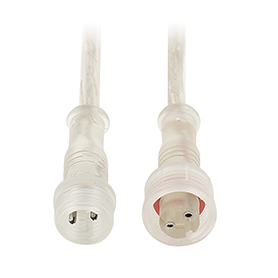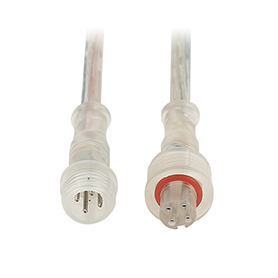News


News

How Low-Voltage Waterproof Connectors Maintain Electrical Stability in Torrential Rain
Release time:2025-03-21
viewed:302
Torrential rain poses a significant threat to electrical systems, especially in outdoor or exposed environments. For low-voltage applications—such as landscape lighting, solar panels, or IoT sensors—water ingress can lead to short circuits, corrosion, and system failures. Low-voltage waterproof connectors are engineered to combat these risks, ensuring uninterrupted performance even during extreme weather.

Water and electricity are a dangerous mix. In heavy rain, unprotected connectors face:
Conductive Paths: Water bridges terminals, causing short circuits.
Corrosion: Moisture oxidizes metal contacts, increasing resistance.
Insulation Breakdown: Wet conditions degrade plastic housings, leading to leaks.
A single storm can disable security cameras, streetlights, or irrigation systems—costing time and money.
The IP (Ingress Protection) system quantifies a connector’s resistance to solids and liquids. For rainy environments:
IP65 connectors guard against low-pressure water jets, ideal for rain and splashes.
IP67 models survive temporary submersion (up to 1 meter for 30 minutes), perfect for flood-prone areas.
IP68 options handle prolonged submersion, with depth and duration defined by manufacturers.
Silicone Gaskets: Flexible and UV-resistant, these seals perform reliably across extreme temperatures (-50°C to 200°C).
Thermoplastic Elastomers (TPE): Known for self-sealing properties, TPE adapts to cable movements caused by temperature shifts.
Gel-Filled Designs: Hydrophobic gels repel water and fill microscopic gaps, preventing even trace moisture intrusion.
Threaded Couplings: Screw-lock mechanisms compress seals to create a watertight barrier.
Dual O-Rings: Redundant sealing at cable entry points and mating interfaces ensures no weak links.
Overmolded Shrouds: Seamless fusion of plastic and metal housings eliminates gaps where water could penetrate.

A solar farm in Florida faced frequent shutdowns during monsoon seasons due to water-damaged connectors. After upgrading to IP67-rated waterproof connectors, the system operated flawlessly through 12 consecutive storms, boosting energy yield by 18%.
A European city deployed IP65 Low-voltage waterproof connectors for its IoT-enabled streetlight network. Despite record-breaking rainfall, the lights maintained 99.9% uptime, thanks to silicone-sealed terminals and anti-wicking cable jackets that blocked moisture absorption.
Voltage Rating: Select connectors rated for at least twice the system voltage to handle unexpected surges during storms.
Cable Compatibility: Ensure connector jackets match the cable material (e.g., TPE connectors for TPE-coated cables) to maintain seal integrity.
Environmental Exposure: Combine IP65/IP67 ratings with UV-resistant materials for outdoor durability.
Certifications: Prioritize connectors certified to UL, IEC 60529, or TÜV standards for proven reliability.
Pre-Installation Checks: Inspect seals for damage and clean mating surfaces to remove debris.
Annual Inspections: Test insulation resistance with a megohmmeter and apply dielectric grease to contacts.
Post-Storm Audits: After heavy rain, check connectors for physical damage or moisture ingress.
Low-voltage waterproof connectors are the unsung heroes of electrical systems in storm-prone regions. By leveraging robust IP ratings, advanced materials like silicone and TPE, and precision engineering, they ensure stable power and data flow—even in the fiercest downpours.